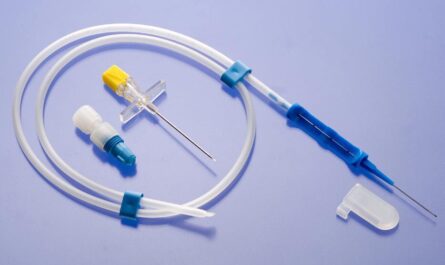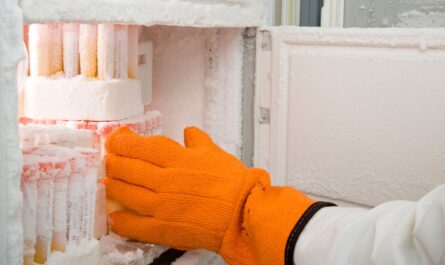
Types of Prosthetic Heart Valves
There are three main types of prosthetic heart valves that are used in valve replacement surgeries:
Mechanical Valve
Mechanical valves are very durable and can last the recipient’s lifetime. However, they require lifelong anticoagulation medication to prevent blood clots from forming on the valve surface as it does not mimic the biological properties of a natural heart valve. The two most common types of mechanical valves are bileaflet valves and tilting disc valves.
Tissue Valve
Also known as biological valves, tissue valves are engineered from animal or human donor tissue. Porcine (pig) and bovine (cow) tissue are most commonly used. Tissue valves have the advantage of not requiring long-term anticoagulation. However, they are not as long-lasting as mechanical valves and may need to be replaced every 10-20 years. The three main types are stented porcine valves, stentless porcine valves, and homograft valves (from human donors).
Valves Made from New Materials
Research is being conducted to develop heart valves made from completely synthetic or bioprosthetic materials like polymers and engineered tissues. The aim is to create valves that have greater durability than tissue valves without the need for blood thinners like mechanical valves. Some examples include the Edwards INTUITY valve made of bovine pericardial tissue preserved with a chemical treatment and the Medtronic Freestyle aortic root made of porcine tissue and synthetic materials.
How a Prosthetic Heart Valve Works
A prosthetic heart valve replaces a patient’s diseased native valve to restore normal blood flow and valve function. Here is a brief overview of how it works:
– The diseased native valve is removed through open-heart surgery either by cutting it out or breaking it up for easier removal.
– The annulus where the valve attaches is prepared and measured to determine the appropriate prosthetic valve size.
– The prosthetic valve is then sewn into the annulus using sutures to secure it in place. For tissue valves, a plastic or metal stent (frame) may be used to hold the valve material in the correct shape.
– Once implanted, the prosthetic valve opens and closes passive in response to pressure changes as the heart beats, allowing blood to flow in the proper direction but not backflow.
– Proper function prevents regurgitation through the valve and reduces the work the heart has to do with each contraction.
Risks and Complications of Prosthetic Heart Valves
While prosthetic heart valves significantly improve patients’ quality of life, they are not without risks or potential complications:
– Bleeding – Patients with a mechanical valve require blood thinners lifelong and have an increased risk of bleeding. Tissue valve patients may still need antibiotics before some procedures.
– Infection – Bacterial endocarditis is a concern any time a foreign object is implanted in the heart. Lifelong antibiotic prophylaxis is recommended for certain activities.
– Thrombosis – Blood clots can form on the valve, especially mechanical types, potentially causing a stroke. Anti-coagulation medication reduces this risk.
– Structural deterioration – Tissue valves may calcify or tear over time requiring reoperation. Mechanical types can also malfunction.
– Nonstructural dysfunction – Issues like pannus overgrowth, sizing errors, improper placement can affect valve function.
– Hemolysis – Abnormal breakdown of red blood cells may occur near certain mechanical valves.
– Heart failure – Rare but advanced heart muscle damage from longstanding valve disease is possible.
Lifestyle and Diet Considerations
Individuals with prosthetic heart valves need to carefully follow physician-directed care plans to reduce risk of complications and extend valve durability. This may include:
– Taking medication as prescribed, especially anticoagulants and antibiotics before procedures.
– Monitoring for signs of issues like infection, bleeding, or clotting. Getting recommended follow up care.
– Maintaining a healthy lifestyle with a nutritious diet, exercise, stress management and avoiding risky activities.
– Practicing good oral hygiene and seeing the dentist regularly to prevent infections.
– Avoiding contact sports or activities with risk of blows to the chest area. Informing medical providers of the artificial valve.
– Getting recommended imaging tests and checkups to monitor valve function and spot any developing issues promptly.
– Following any stipulated waiting periods before pregnancy or other healthcare decisions and working closely with physicians.
The Future of Heart Valve Repair and Replacement
Research is active to develop more durable and patient-friendly prosthetic options. Some areas on the horizon include:
– Tissue engineered heart valves grown from a person’s own cells for zero rejection risk.
– Valves made of novel synthetic materials mimicking native tissue for enhanced lifespan.
– Minimally invasive transcatheter technologies allowing valve implantation through small openings without open-heart surgery.
– Advances in robotics, 3D printing and other technologies empowering less traumatic repairs or implant procedures.
– Regenerative treatments like patching damaged valves from inside without replacement.
Conclusion
In conclusion, prosthetic heart valves have provided life-extending benefit to millions worldwide by restoring valve function damaged by disease. Future innovations promise even better quality of life while minimizing health risks and lifestyle adjustments.
*Note:
- Source: Coherent Market Insights, Public sources, Desk research
- We have leveraged AI tools to mine information and compile it


